I'm trying to change the color of the status bar to match the rest of the Page background-color and it seems to be not working.
Below is what my home.css looks like
Page {
background-color: #5497CB;
color:#ecf0f1;
}
Here is what my home.js looks like
var frameModule = require("ui/frame");
exports.loaded = function(args) {
var page = args.object;
var iosFrame = frameModule.topmost().ios;
if (iosFrame) {
iosFrame.navBarVisibility = 'never';
}
};
And lastly here is what my home.xml
<Page loaded="loaded">
<StackLayout orientation="vertical">
<TextField id="email_address" text="{{ email }}" hint="Email Address" keyboardType="email" />
<TextField secure="true" text="{{ password }}" hint="Password" />
<Button text="Sign in" tap="signIn"/>
<Button text="Sign up for Groceries" cssClass="link" tap="register"/>
</StackLayout>
</Page>
As you can see nothing over complicated, just trying to get the status bar color to have a white font and same background color!
Any pointers?
